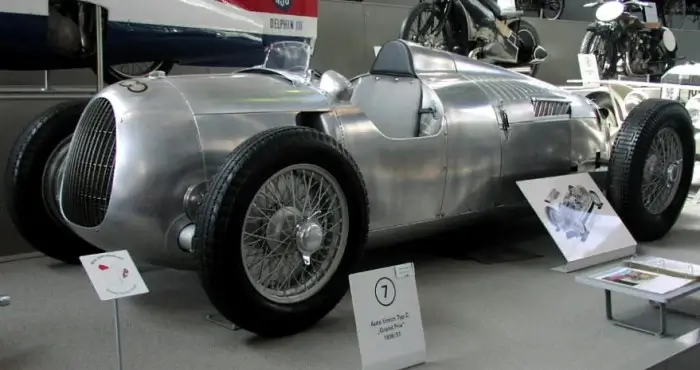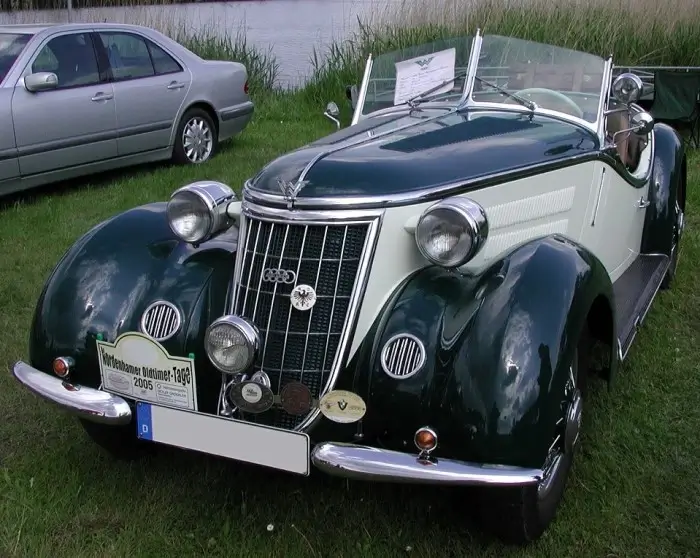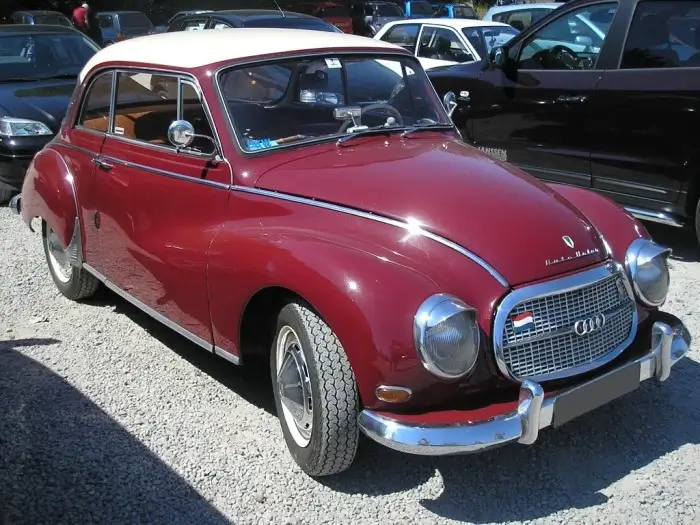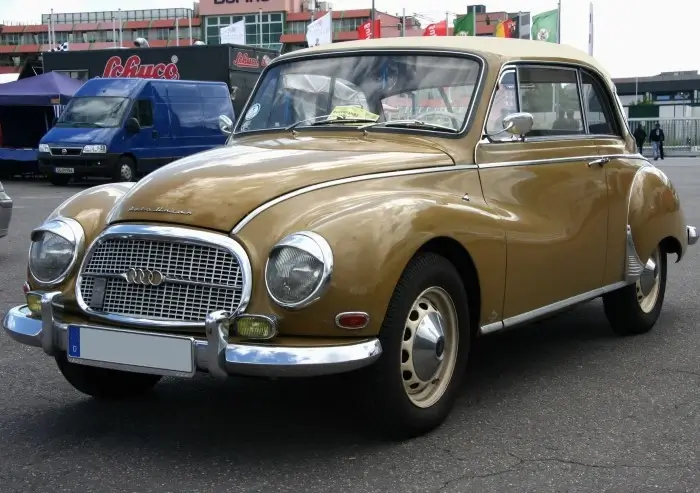Auto Union Tyres

1936 Auto Union Type C
Auto Union History

1936 Auto Union Wanderer
Auto Union AG, Chemnitz, was a merger of four German vehicle manufacturers: DKW, Horch, Audi, and Wanderer. Founded in 1932 and established in 1936 in Saxony. It is the direct forerunner of Audi as it is recognised today.
In addition to serving as a holding company for its four component businesses, Auto Union is well-known for its racing team (Auto Union Rennabteilung). From 1934 onwards, the Silver Arrows of the German teams (Mercedes-Benz and Auto Union) controlled not just GP car racing but also set records that would take decades to break, such as the highest speed ever reached on a public road (268.9 mph), which lasted until 2017. After being almost bankrupt in the wake of WWII, Auto Union was re-founded in 1949 in Ingolstadt, Bavaria, eventually growing into the modern-day Audi corporation following its purchase by Volkswagen in 1964 and subsequent merging with NSU Motorenwerke in 1969.
After meeting Hitler before he became Chancellor, German racing driver Hans Stuck Sr. accepted Rosenberger's offer to join him, von Oertzen, and Porsche in contacting the Chancellor. Hitler agreed with Porsche in a meeting in the Reich Chancellory that it would be better for the glory of Germany for two firms to expand the venture, leading Hitler to agree to pay £40,000 for the nation's best racecar of 1934, as well as a yearly stipend of 250,000 RM (£20,000) each for Mercedes and Auto Union.

1965 Auto Union 1000
In the 1930s, the buildup to the outbreak of World War II promoted the creation and manufacturing of vehicles for military applications. Auto Union grew to be a major supplier of automobiles to Germany's military services. In May 1940, civilian manufacturing was halted due to the start of the war. Following that, the corporation produced solely for military objectives.
Auto Union plants were heavily bombarded and severely damaged beginning in early 1944. On April 17, 1945, at the close of WWII, the United States Army captured Zwickau. Following the evacuation of the US Army from Zwickau on June 30, the Saxon Auto Union plants were taken by the Red Army.
The enterprise used slave labour at the concentration camp of Leitmeritz. Auto Union bears "moral responsibility" for the 4,500 fatalities at Leitmeritz, according to a 2014 investigation commissioned by the business.
The factory was demolished as war reparations in 1945, on the instructions of the Soviet Military Administration in Germany, while the racing cars discovered in a colliery were sent to Moscow for reverse engineering. Following this, the assets of Auto Union AG were liquidated without recompense. Auto Union AG of Chemnitz was struck from the commercial register on August 17, 1948.
With the Red Army rapidly approaching Zwickau shortly after the war, and the chance of salvaging what was left of the corporation, Auto Union's leaders had little choice but to evacuate and re-establish the business on the Western segment of a newly partitioned Germany.

Auto Union 1000
The DKW Meisterklasse F 89 P, offered as a sedan/saloon, a station waggon, and the four-seater convertible produced by Karmann, entered into production in 1950, when a former Rheinmetall-Borsig plant in Düsseldorf-Derendorf was formed as a second assembly site.
In response to demand from Friedrich Flick, the company's largest single shareholder at the time, Daimler-Benz purchased 87 per cent of Auto Union in April 1958, eventually gaining entire control the following year. The Auto Union brand returned in 1958, embodied by the Auto Union 1000, a modest saloon. In the same period, the coachbuilder Baur in Stuttgart developed the 1000 Sp coupé for Auto Union. Under Daimler-Benz ownership, the firm made significant investments in the Ingolstadt factory. After car manufacturing ceased in Düsseldorf, the facility became the hub of manufacturing for Mercedes-Benz commercial vehicles such as the Mercedes-Benz L 319, a position it still plays today.
Volkswagen purchased the Ingolstadt factory and Auto Union's trademark rights in 1964, with the exception of the defunct Horch brand, which Daimler-Benz kept. Daimler began a programme at Auto Union that resulted in a series of automobiles that would later serve as the foundation for Volkswagen's range of front-wheel-drive vehicles, such as the Audi 80 and Volkswagen Passat. At the time, a new model, internally codenamed F103, was in the works.
Following the merger with Neckarsulm automobile manufacturer NSU, the legal name became Audi NSU Auto Union AG, which was simply simplified to Audi AG in 1985, thereby eliminating both the Auto Union and NSU brands. The company's headquarters relocated to Ingolstadt; at the same time, Audi established the new firms Auto Union GmbH and NSU GmbH as wholly-owned subsidiaries to own and preserve Auto Union and NSU's historical trademarks and intellectual property.
